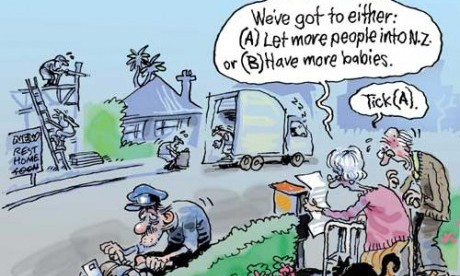We all know what’s coming. Everywhere in the developed world, populations are greying. The media are full of stories about the surge in the numbers of the elderly within the next 20 years, while governments have been pushing the age of retirement entitlements upward. Most of the spotlight has been on the new greybeards themselves—the Baby Boomers in North America and Australia, the somewhat smaller postwar “boomlets” elsewhere—and not on the other side of the approaching demographic flip. The elderly will almost double their current share of national populations—not just because they are so many, but because their descendants are so few.
More than half the world’s population—now lives in societies where the fertility rate has been dropping, like a stone in some places, for decades. Among demographers, the prevailing narrative for this sea change in human affairs talks of economic development finished off by cultural change. As countries grow wealthier and more urban, with higher levels of education for women, as well as men, women naturally wish to have fewer children; add in access to safe and effective means to that end—contraception and abortion—and that’s precisely what they do.
True enough, but not the whole truth, argues Harvard demographer Michael Teitelbaum, co-author (with Yale historian Jay Winter) of The Global Spread of Fertility Decline. At the core of the change, Teitelbaum believes, lies the rational belief of young adults—especially the highly educated, those most aware of the weak points in their society’s institutions—that they live in “risk societies.” The risks they see can reach to the apocalyptic (will there be another Chernobyl, another 9/11, how many more Lac-Mégantics?) to macroeconomic pessimism (can today’s social welfare entitlements last?) to individual concerns(will we ever be able to own a house?). Marriage- and child-aversion are among their risk-management strategies. Continue reading
Sources
